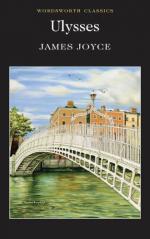|
This section contains 1,043 words (approx. 3 pages at 400 words per page) |

|
Stream of Consciousness
The stream-of-consciousness novel takes as its subject the interior thought sequence and patterns of associations which distinguish characters from one another. According to A Handbook to Literature, the stream-of-consciousness novel assumes that what matters most about human existence is how it is experienced subjectively. The interior level of experience is idiosyncratic, illogical, and disjointed and the “pattern of free psychological association . . . determines the shifting sequence of thought and feeling.” The work of Sigmund Freud (1856–1939) offered a structure and way of understanding different psychological levels or areas of consciousness, and some modern writers, such as Joyce, Virginia Woolf, and William Faulkner, drew upon Freud’s theories as they used the stream-of-consciousness style.
In the eighteenth and nineteenth centuries, many English novels focused more on outer rather than inner events, and the plot was usually arranged in a linear fashion (as it is, for...
|
This section contains 1,043 words (approx. 3 pages at 400 words per page) |

|




